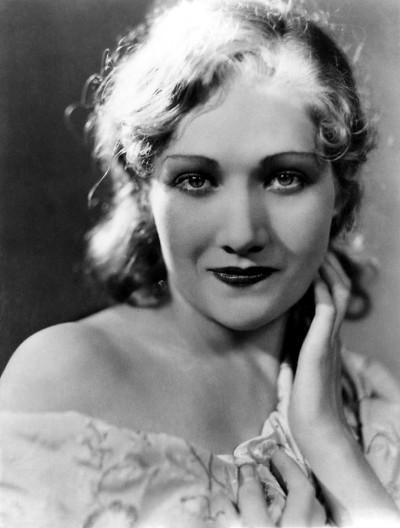Edwina Booth (Josephine Constance Woodruff)

Born Josephine Constance Woodruff, the daughter of a doctor, in Provo, Utah, Edwina Booth’s brief film career began in 1928 with the Dorothy Arzner-directed Manhattan Cocktail. She was on vacation following a 1927 stage appearance when film director E. Mason Hopper saw her and offered her a part in a Marie Prevost picture. Metro-Goldwyn-Mayer (MGM) was impressed with her, and cast Booth in supporting roles. Her chance for stardom came when the studio cast her in its new jungle epic Trader Horn opposite Harry Carey. MGM gave the production a fairly large budget, and sent cast and crew on location in East Africa. Until 1929, the only films shot in Africa were travelogues, but MGM was hoping the idea of “location shooting” might increase the film’s commercial appeal. The crew was inexperienced and ill-equipped for filming in Africa, a problem exacerbated by MGM’s last-minute decision to shoot the film with sound. In addition to coping with the heat and insects, Booth contracted malaria during shooting. (In an interview with Dick Cavett in the 1970s, Katharine Hepburn said Booth contracted schistosomiasis.) Her role in the film as “The White Goddess” required her to be scantily clad, likely increasing her susceptibility. Production went on for several months (much longer than average production time in those days), and the film wasn’t released until 1931. Despite many problems with the film’s production, Trader Horn was a success, securing an Academy Award nomination for Best Picture.
Booth fared much worse; it took her six years to fully recover physically. She sued MGM for over a million dollars, claiming she had been provided with inadequate protection and inadequate clothing during the African shoot. She claimed she had been forced to sunbathe nude for extended periods during filming. The case received a lot of attention in the tabloids and was eventually settled out of court. According to some sources, the terms were not disclosed; however, Brigham Young University archives indicate she settled for $35,000. In 2014 dollars that would be at least $600,000 Booth’s acting career never recovered from the MGM debacle. Neither MGM nor the other major studios had any intentions of employing her, which created an opportunity for producer Nat Levine of the low-budget Mascot Pictures. Levine saw a chance to capitalize on the success of Trader Horn by reuniting its stars Harry Carey and Edwina Booth for two adventure serials, The Vanishing Legion and The Last of the Mohicans. The films were successful within their limited market, but failed to propel Booth’s movie career forward.
Booth withdrew completely from the public eye, although she continued to receive fan mail for the rest of her life. She declared that she would be dedicating all of her future leisure and a large proportion of her earnings to the alleviation of human suffering, “My years of illness have not been wasted,” she informed the local press. “I have learned to love mankind.” She became more active in The Church of Jesus Christ of Latter-day Saints, frequently attending the Los Angeles California Temple. Booth was married three times. Anthony Shuck, her first husband, had their marriage annulled soon after her return from Africa. She married her second husband, Urial Leo Higham on November 21, 1951; he died in 1957. Her third husband was Reinold Fehlberg. They were married from 1959 until his death in 1983. There were many false rumors and reports of her demise[1] until her actual death in 1991. She had no children. She is buried in Santa Monica’s Woodlawn Cemetery.
Born
- September, 13, 1904
- USA
- Provo, Utah
Died
- May, 18, 1991
- USA
- Los Angeles, California
Cause of Death
- cardiovascular disease
Cemetery
- Woodlawn Cemetery
- Santa Monica, California
- USA



